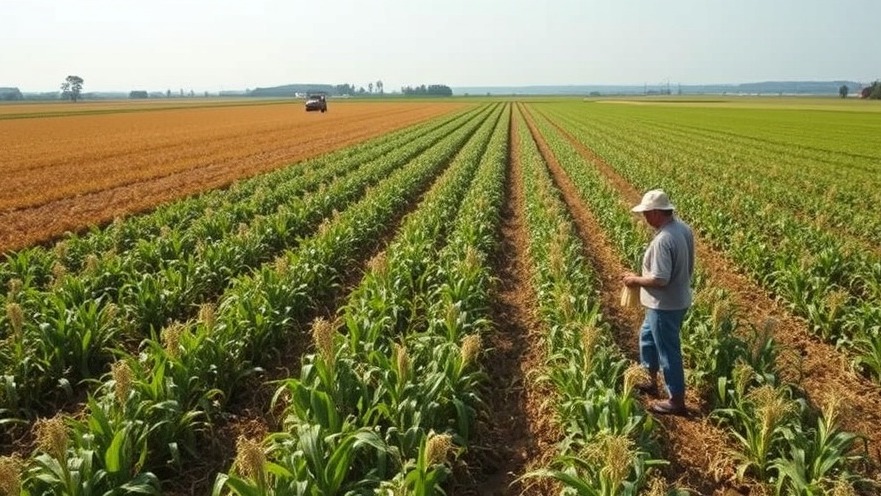
Understanding the Critical Role of Immigrants in Rural Workforce
As of 2023, over 47 million immigrants make up about 14% of the total U.S. population, with approximately 1.8 million residing in rural regions. Recent immigration policies aimed at reducing immigration have raised concerns regarding labor shortages, particularly in essential industries such as health care—a field already grappling with significant workforce deficits. The implications extend beyond mere employment; they touch upon the core of public health and community wellness.
Immigrants: Essential Participants in Rural Health Care
In rural areas, immigrants constitute 5% of the adult population and workforce. Despite their relatively small presence, their impact is disproportionate in critical sectors. They represent 14% of physicians and surgeons, showcasing their vital contribution to medical services in areas where healthcare accessibility is often limited. Research indicates a concerning trend: rural populations tend to be older and face more severe health issues compared to urban counterparts. With immigrant workers often filling these healthcare roles, their significance cannot be overstated.
Economic Contributions and Challenges
Immigrants thrive in various sectors, including agriculture, construction, and services. For instance, in agriculture alone, they account for 28% of the workforce. However, while the employment rates among immigrant workers align closely with that of U.S.-born workers, disparities emerge. Immigrant workers are more likely to earn lower incomes, with 22% reported earning below $20,000 annually compared to 18% of their U.S.-born counterparts. This economic vulnerability underscores the need for supportive policies that address health care access, insurance coverage, and fair wages.
State-by-State Variations of Immigrant Workforce Presence
The demographic distribution of immigrant workers in rural America is not uniform; it varies extensively across states. States like Hawaii, Florida, and Connecticut see immigrants accounting for over 10% of the rural workforce, significantly higher than the national average. This inclusion points toward broader socio-economic patterns influencing immigration flow and the resultant impact on local economies and health systems.
Immigrant Health Coverage: A Barrier to Well-being
Despite their essential roles, immigrant workers in rural areas face significant health coverage barriers. A staggering 40% of noncitizen immigrant workers do not have health insurance compared to only 8% of U.S.-born workers. This gap not only affects individual wellness but also endangers community health, particularly in rural settings where access to medical resources is already strained. Comprehensive health coverage reforms are crucial to ensure that all workers can maintain their health, ultimately benefiting the broader community.
Public Health Implications and Future Trends
The ramifications of immigrant participation in the rural workforce extend into the domain of public health. Given that health care shortages in rural America are compounded by an aging population, the essential role of immigrant workers cannot be overlooked. Projections indicate a growing reliance on immigrant labor to meet the needs of health services as the population continues to age. The intersection of immigration policy and public health will shape future workforce dynamics, necessitating a comprehensive approach that values the contributions of immigrant workers.
Actionable Insights: How You Can Help
For suburban professionals interested in sustainable health and community wellness, understanding the role immigrants play can prompt engagement in advocacy. Supporting policies that improve health access for all workers, regardless of immigration status, can lead to healthier communities and ultimately, better outcomes for everyone. By fostering an environment that values diversity and inclusion, towns and businesses can promote greater economic vitality and health equity.
 Add Row
Add Row  Add
Add 




Write A Comment